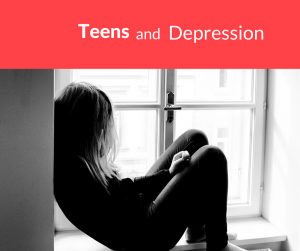What Are Your Internal Dialogues Trying to Protect You From?
/By Concentric Therapist Intern Mara Hundrieser-Acosta, B.A. (Clinical Mental Health Counselor M.A.)
I know I am not the only one that has internal conversations with different parts of myself. Just going back and forth with what I should have done, said, or even experienced. I recently lost my mother to cancer. When someone asks me “How are you doing? I answer with “ I am doing ok, just taking it one day at a time.” but on the inside, my brain is struggling. The actual answer in my mind is, “ I miss my mom, I wish I could see her.” and then another part of my mind answers “I have to cook dinner, wash clothes, put them away, and so much more to do, I feel so overwhelmed.” and another part says, “People will think you don’t have a handle on your life if you let them know how you truly feel.” So, I end up giving a generic answer and smile.
The conversation inside my mind keeps going even though on the outside I am smiling and making small talk. Sometimes when we have been through hard times, we develop a strong voice that keeps us “in check.” When we view this through an Internal Family Systems (IFS) lens, it's called a Manager. We all have these internal conversations. No, there is nothing wrong with us; it’s just part of how we take care of ourselves internally. You might wonder what I mean about how we take care of ourselves internally. We all go back and forth with all of our parts to try to navigate our lives through stress, anxiety, depression, painful situations, and trauma. Through IFS we can learn what these parts need in order to feel at peace in our life.
“IFS guides us to offer deep understanding and credible help to the critic and the innumerable other parts who populate our clients’ inner worlds, some of whom long to transform but are stuck in extreme, destructive roles.” -Schwartz & Sweezy (2020)
What is IFS?
Internal Family Systems (IFS), a model of therapy and an approach to better understand ourselves, was developed by Dr. Richard Schwartz. He has worked on the development of IFS for over 40 years. Dr. Schwartz holds a Ph.D. in Marriage and Family Therapy and was trained to view and understand people through a systematic lens. After years of working with families and individuals, Dr. Schwartz noticed how clients would speak about their different inner parts. Just like I shared my internal dialogue about being asked about me in relation to my mother.
While in session with clients, Dr. Schwartz’s patients would share how they would go back and forth with different parts of themselves. Dr. Schwartz noticed those parts also operate within a system similar to how a system of family operates. For example, a family system consists of different family members, roles or parts (e.g. parents, children) that interact with each other.
If we look at humanity or systems with a very wide lens, we notice a system is always in place, starting with our solar system. Dr. Schwartz was able to recognize there is a system that consists of people’s inner parts. These parts are called Managers, Firefighters, and Exiles. These parts have developed to protect us from harm, trauma, and difficult experiences that have left a wound inside our psyche. They all have a specific role that falls under a three-group system. All of our parts are good, even though they might seem mean or aggressive at times.
The goal of IFS is to help people become Self-led, which means that their various parts feel loved by the Self and trust the Self’s leadership. IFS therapy has a gentle way to ease the pain of people’s experiences and parts and to help navigate the internal turmoil one often faces throughout life.
The Roles of Parts: A Three-Group System
In order to understand further this three-group system we need to understand that each group or also called protective parts (Managers, Exiles, and Firefighters) doesn't have just one personality. There are different kinds of Managers; each one has its own role to play, as well as the Exiles and the Firefighters to protect us internally. These three-group systems work with each other and sometimes what feels like against each other in order to keep us safe internally.
In other words…
One group tends to be highly protective, strategic, and interested in controlling the internal or external environment to keep things safe. In IFS, we call the members of this group Managers.
A second group contains the most sensitive members of the system. When these parts feel injured or outraged, Managers will banish them for their own protection and the good of the whole system. We call them Exiles.
A third group tries to stifle, anesthetize, or distract from the feelings of Exiles, reacting powerfully and automatically, without concern for consequences, to their distress as well as to the over-inhibition of Managers. We call these members Firefighters.
Trauma & Internal Family Systems
According to Schwartz & Sweezy (2020), internal systems (parts) that are responding to trauma not only divide into these roles, but the protective parts (Managers and Firefighters) also form alliances and get into conflicts with each other and can be very harsh or smothering with the Exile they are trying to protect or ward off. The sadder, more terrified, ashamed, rageful, or sexually charged an Exile is, the more protectors legitimately fear its release and the more extreme they become in their efforts to suppress and constrain them. In turn, the more an exile is suppressed, the more it tries to break out. In this way all three groups become victims of an escalating cycle of internecine* conflict.
*internecine: destructive to both sides in a conflict.
Example: The more ashamed I feel about a traumatic event that happened to me the more scared the Managers and Firefighters are of me releasing or admitting this shame. So, the Managers and Firefighters will try really hard for me to suppress that shame. Which can mean one can begin to use drugs and alcohol to control that shame, or become very narcissistic in order to push it way down. The Managers and Firefighters believe that if one releases or admits this shame, it (the part) will ultimately fall apart.
Childhood & Internal Family Systems
The Self can be forceful and protective. Children who have experienced developmental trauma or any abuse of their independence, spontaneity, leadership (or other traits that rely on courage themselves) begin to suppress their courageous side. It takes tremendous courage to go toward terrifying places in the psyche. Many protectors avoid stepping out of their roles because they believe the person would be weak and passive without them. Protectors always have intense fears about allowing clients to open the door to Exiles they locked away years ago in inner dark places. When a client says they are afraid to do something, we know a part in their inner world is speaking. But once the part understands the fearless nature of the Self, its fear (and emotional pain, shame, and rage) surrenders.
IFS Therapy has 4 Goals:
To liberate parts from the roles they have been forced into, freeing them to be who they were designed to be.
To restore faith in The Self and in Self-Leadership.
To re-harmonize the inner system.
To encourage the person or client to become increasingly Self-led in their interactions with the world.
So, What Does This All Mean?
The intention of IFS is for the client to access, experience, and be Self-led, to feel safe, to learn their inner world, and understand how their parts work together or against each other in order to protect them. The more we learn and understand about our parts and what they are trying to tell us; it then becomes easier to identify when they get activated. Understanding who we are, where we have been, and what has hurt us, is what is going to give us the opportunities to heal ourselves. The end goal is to be able to be our own saviors, but to get there we must be willing to surrender and be open to learning.
Once a person experiences faith in The Self and in Self-leadership, the IFS therapist seeks to help the client develop the Eight C’s.
The Eight C’s
Curiosity: The client learns to be inquisitive, and have interest rather than be judgmental or fearful. This is where one comes with no agenda, one just wants to learn, know, and understand. There is a sense of feeling at ease and moving forward with wonder. There is a sense of safety that opens the door to vulnerability.
Calm: After being in a high alert state, where one’s nervous system is often aroused, Self-leadership does the opposite by creating a sense of calm that is both physical and mental. The client is able to accept life on its own terms and there is a sense of resilience and assertiveness.
Courage: When a client says they are afraid to do something in the inner world, we know a part is speaking. But once the part understands the fearless nature of The Self, its fear (and emotional pain, shame, and rage) surrenders.
Confidence: The Self validates and comforts its Exiles bringing about an infectious air of confidence, conveying to protector parts that it is safe to relax instead of trying to “let it go and move on” (the typical protector advice that encourages people to abandon and isolate their burdened young parts), injuries can be healed. When Exiles are unburdened, the system becomes less delicate and less reactive, and protective parts are more inclined to trust Self-leadership.
Connectedness: The Self, in its natural state, experiences the sense of connectedness. Instead of trying really hard to obtain a connection with someone, through trauma bonding. The Self can now move through the world in harmony. Connectedness links with calm and confidence which altogether links up The Divine.
The Divine: Through extensive research by Dr. Richard Schwartz this is what he describes as The Divine. “Though they used different words, all the esoteric traditions within the major religions – Buddhism, Hinduism, Christianity, Judaism, Islam – emphasized their same core belief: we are sparks of the eternal flame, manifestations of the absolute ground of being. It turns out that the Divine within – what the Christians call the soul or Christ Consciousness, Buddhists call Buddha Nature, the Hindus Atman, the Taoists Tao, the Sufis the Beloved, the Quakers the Inner Light.”
Clarity: One can see things more clearly. The distortions are no longer in effect and the extreme beliefs ease as one can see authenticity. Our vision is clear when we see through the eyes of the Self versus when our vision is distorted through the eyes of extreme parts.
Creativity: It’s believed that once the inner turmoil and constant struggle start to quiet down and The Self becomes the leader (aka Self-led), creativity can emerge naturally. This means once the managers start to relax, we can problem-solve with greater ease which becomes second nature.
Compassion: Once a client finds some separation or healthy distance from their angry or scared part, they can now see these parts from a compassionate lens. They can express how sad or sorry they are for those parts and are willing to help them heal. This inherent desire to help their suffering parts signifies and taps into compassion.
I hope that after reading all this information there is a part of you that feels compelled to explore IFS. I want to say to “the part” of you that has that interest, that feels like it has been lost, in pain, or any other unresolved feelings; you are important and you deserve to be seen and heard. If you are wondering which part that might be, I am talking to your Self-led part; the part that might be hiding in the shadows for a while.
We live in a time where we are overworked, overwhelmed, on the go, not getting enough sleep, expecting to be everything and nothing at all, where we have to walk on eggshells, but make a difference. It’s no wonder that our Self-led part feels so overwhelmed and just lost. This is the time when we need to slow down and rebel; which translates to going inside, getting curious about your parts, and reconnecting to who we truly are meant to be.
I know it might sound like a big ask, yet if you go back and read about The Eight C’s and imagine experiencing them, I think it’s all worth the journey of healing. The idea of feeling liberated is what motivates me through the IFS lens. I wish for you and my clients to feel liberated from whatever has been holding you back from being your most authentic self and be connected to your Divine.
So, next time you have those internal conversations bring awareness to what each part is saying, and ask them what they truly need. They are trying to protect you even if they might sound very harsh or act maladaptively; they just haven’t learned a better way, yet, to communicate with you. Even if you don’t think you have the power within you to heal, to reframe those inner dialogues; you actually do, it’s inside you.
Resources for Consideration
Books: IFS online store | IFS Institute
Videos: Dr. Richard Schwartz explains Internal Family Systems (IFS) Dr. Richard Schwartz Has A Radical Approach To Healing
Podcast: Multiplicity of the Mind: An Approach To Healing the Inner Self | Dr. Richard Schwartz X Rich Roll









